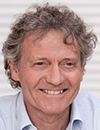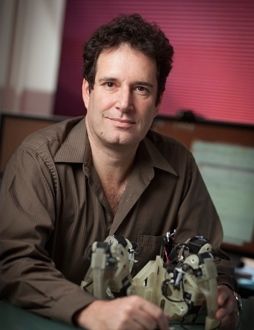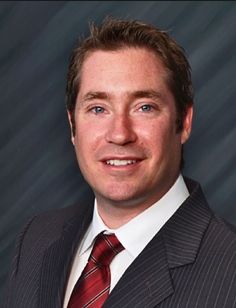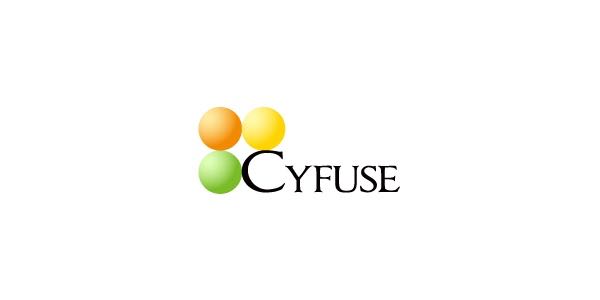Other Track AgendasClinical Applications & Clinical Translation of Tissue Engineering | Emerging Themes and Technologies in Tissue Engineering and Bioprinting |

Monday, 9 February 201508:00 | Conference Registration, Coffee, and Breakfast Pastries | 08:50 | Chairman's Opening Remarks
Jon Rowley, Chief Executive And Technology Officer, Rooster Bio Inc, United States of America
| |
Opening Plenary Session: Emerging Themes and Research Trends in Bioprinting |
| | |
Session Chair: Jon Rowley, Ph.D., CEO, RoosterBio |
| | 09:00 |  | Keynote Presentation Bioprinting: What, Why, Where
Gabor Forgacs, Professor, University of Missouri-Columbia; Scientific Founder, Organovo; CSO, Modern Meadow, United States of America
This talk will give an overview on the use of 3D printing to build biological structures. Despite the fact that the field is young a number of approaches have been developed, such as inkjet, extrusion, acoustic, laser-assisted bioprinting and others. This reflects the diversity of the applications ranging from the deposition of single cells to the printing of organs, and, as a consequence, the fact that no single method can satisfy all needs. In analogy with any printing process, bioprinting requires the bioink, the biopaper and the bioprinter. However, in contrast to the 3D printing of nonliving compositions bioprinting itself does not result in the final product. The true biological structure, such as a tissue forms from the discrete bioink particles post-printing and is governed by complex biological processes with no counterpart in the inanimate world. This sequence of events will be demonstrated through a specific example. We will end with a peak into the future.
|
| 09:45 |  | Keynote Presentation The Next 25 Years of 3D Printing
Hod Lipson, Professor, Cornell University, United States of America
Additive manufacturing has evolved over the last three decades from limited and
expensive prototyping equipment in the hands of few, to commodity
production tools available to almost anyone. It’s been broadly
recognized that this burgeoning industrial revolution will transform
almost every industry, and every aspect of our lives. But where will
this technology go next? This talk will describe the underlying
disruptive future of 3D printing: From printing arbitrarily complex
shapes to creating new kinds of materials, and ultimately, moving from
fabricating passive parts to printing active, integrated systems,
including electronics, actuators and sensors. Will we be able to print a
robot that will walk out the printer, batteries included? |
| 10:30 | Coffee Break, Networking with Exhibitors, and Poster Viewing | 11:00 | 3D Bioprinting of Vascularized Living Tissue
Jennifer Lewis, Professor, Harvard University School of Engineering and Applied Sciences, United States of America
The ability to pattern biomaterials in planar and three-dimensional
forms is of critical importance for several applications, including 3D
cell culture, tissue engineering, and organ mimics. 3D printing enables
one to rapidly design and fabricate soft materials in arbitrary patterns
without the need for expensive tooling, dies, or lithographic masks.
In this talk, the design of novel cell-laden, hydrogel (extracellular
matrix) and fugitive (vascular) inks with tailored rheological
properties for 3D bioprinting will be described. We will also present
recent advances in 3D bioprinting of vascularized, heterogeneous
cell-laden tissue constructs with as well as ongoing efforts to
characterize these 3D living architectures. | 11:30 | 3D Biofabrication of Complex Living Cardiovascular Tissues: Past, Present, Future
Jonathan Butcher, Associate Professor, Biomedical Engineering, Cornell University, United States of America
Cardiovascular disease remains a leading cause of death worldwide.
Despite their potential, achieving functional living tissue replacements
has been an elusive “Holy Grail” for the last two decades. Among the
challenges is that natural tissues are highly complex, hierarchical
structures that are difficult to replicate. Tissue biofabrication
technology, in particular 3D tissue printing, has made significant
strides over the past 5 years to close this gap. 3D tissue printing has
the capacity to prescribe both macro and microstructural environmental
cues that are essential for coordinating whole tissue function. We
discuss recent findings on two prominent applications: trileaflet heart
valves and vascularized tissue flaps. | 12:00 | 3D BioFabrication for Biological Machines and Tissue Engineering
Rashid Bashir, Professor And Head, University Of Illinois, United States of America
The integration of living cells with soft scaffolds can enable the
fabrication of biological machines and soft robotics. These cell-based
biological machines can be defined as a set of sub-components consisting
of living cells and cell-instructive micro-environments that could
eventually perform a range of prescribed tasks. The realization of
biological machines and their sub-components will require a number of
suitable cell sources, biomaterials, and enabling technologies. Here, we
review our group’s recent efforts towards this goal and of developing
cell based biological machines. We have fabricated locomotive
‘‘bio-bots’’ from hydrogels and cardiomyocytes using a 3D printer. The
multi-material bio-bot consisted of a ‘biological bimorph’ cantilever
structure as the actuator to power the bio-bot, and a base structure to
define the asymmetric shape for locomotion. The cantilever structure was
seeded with a sheet of contractile cardiomyocytes. We will also
describe the development of a 3D-printed electrically paced skeletal
muscle based ‘bio-bot’ devices where skeletal myoblasts embedded in ECM
proteins compacted around a hydrogel structure were used to create the
power source of the biological walking machine. While the specific
applications are yet to be defined, these devices could have potential
applications in drug delivery, power generation, and other biomimetic
systems. | 12:30 | Networking Lunch and Exhibit, Poster Viewing | |
Session Title: Technologies and Engineering Methodologies for 3D-Bioprinting Including BioInks |
| | |
Session Chairman: Hod Lipson, Ph.D., Professor, Cornell University |
| | 13:30 | Multi-Arm Bioprinting: From Perfusable Tissues to in-situ Bioprinted Tissues
Ibrahim Ozbolat, Hartz Family Associate Professor of Engineering Science and Mechanics, The Huck Institutes of the Life Sciences, Penn State University, United States of America
This talk highlights the recent advances in extrusion-based advanced bioprinting technologies using multi-arm bioprinting. The Multi-Arm BioPrinter (MABP) created at The University of Iowa enables synchronized motion of multiple arms in tandem to bioprint multiple bioink at the same time. The MABP is flexible to be equipped with different nozzle apparatus for various purposes including vascular tissue printing, hybrid tissue scaffold printing, scaffold-free vascularized perfusable tissue printing and in-situ multi-arm bioprinting. In this talk, we will emphasize recent significant capabilities including vascularized perfusable tissue printing for drug testing and in-situ bioprinting of bone tissue for translation of advanced robotics technologies from bench to bedside. | 14:00 | 3D Scaffolds with Tailorable Topology and Topography through Biofabrication Technologies
Lorenzo Moroni, Professor, Biofabrication for Regenerative Medicine, Maastricht University and Founder MERLN Institute for Technology-Inspired Regenerative Medicine, Netherlands
A key factor in scaffold-based tissue and organ regeneration relies on
enhancing (stem) cell-material interactions to obtain the same original
functionality. Different approaches include delivery of biological
factors and surface topography modifications. Although both strategies
have proved to augment cell activity on biomaterials, they are still
characterized by limited control in space and time, which hampers the
proper regeneration of complex tissues. Here, we present a few examples
where the integration of biofabrication technology platforms allowed the
generation of a new library of 3D scaffolds with tailored biological,
physical, and chemical cues at the macro, micro, and nano scale. By
engineering their topological properties, these porous biomaterials
influence the activity of seeded cells, thereby initiating the
regeneration of skeletal, vascular, and neural tissues. Future efforts
should aim at further improving our understanding of scaffold
topological properties to achieve a fine control on cell fate at
multiple scales. This will enable the regeneration of complex tissues
including vasculature and innervation, which will result in enhanced in
vivo integration with surrounding tissues. By doing so, the gap from
tissue to organ regeneration will be reduced, bringing regenerative
medicine technologies closer to the clinics. | 14:30 | Extrusion Printing of Hydrogels with Embedded Cells
Paul Calvert, Professor of Bioengineering, UMass Dartmouth, United States of America
A 3D printer has been used to make porous open gel “logpiles” with 200
micron bars containing embedded cells including yeast, fibroblasts and
algae. The activity of the cells has been studied as a function of gel
composition. As expected, cells can metabolize and multiply within a
100 microns of the gel surface. Following the activity of a yeast
membrane-bound invertase and comparing this with known diffusion
coefficients allows us to quantitatively model metabolism. The gel
formulations need to give good strength coupled with easy diffusion of
nutrients and products will be discussed. Diffusion coefficients have
also been measured for a number of macromolecules in different types of
printed gels in order to determine the possibility of using encapsulated
cells in 3D gel scaffolds as small bioreactors to produce proteins. | 15:00 | Coffee Break, Networking, Exhibit and Poster Viewing | 15:30 | 3D Bioprinting of Cartilage Tissue with Novel CELLINK
Paul Gatenholm, Professor, Director of 3D Bioprinting Center, Chalmers University of Technology, Sweden; CEO, CELLHEAL AS, Norway, Sweden
The development of high resolution 3D Bioprinters enables positioning of several human cell types with high accuracy and reproducibility and thus reconstruction of complex tissue and organs. Rapid advances in stem cell isolation from patient own tissue such as adipose make it possible to have access to sufficient amount of autologous cells for tissue repair in one step surgery. The bioinks needs however to be developed and commercialized to secure supply of printable and cell friendly scaffolds. We have developed a new generation of water borne biomimetic printable scaffolds with unique printability into 3D shapes and ability to support cartilage growth. This lecture will review our work with this novel CELLINK for 3D Bioprinting of ear, meniscus, trachea and articular cartilage. | 16:00 | Development of Bioinks for 3D-Bioprinting
Jos Malda, Professor of Biofabrication in Translational Regenerative Medicine, University Medical Centre Utrecht, Netherlands
Hydrogels are particularly attractive as “bioinks” for biofabrication as
they recapitulate several features of the natural extracellular matrix
and allow cell encapsulation in a highly hydrated mechanically
supportive 3D environment. Additionally, they allow for efficient and
homogeneous cell seeding, can provide biologically-relevant chemical and
physical signals and can be formed in various shapes and biomechanical
characteristics. Nevertheless, there exists a significant challenge in
biofabrication: the optimization of – intrinsically weak – hydrogels to
address the physico-chemical demands of the biofabrication process and
the right conditions for cell survival on the one hand, and to address
the harsh in vivo mechanical environment on the other. We have developed
novel hydrogel-based bioink formulations that allow for the
construction of intricate 3D structures, whilst providing the cells with
a biologically suitable environment. | 16:30 | Bioprinting and Bioassembly of Bioficial Organs
Stuart Williams, Director, Bioficial Organs, University of Louisville, United States of America
The assembly of functional organs from a patient’s own tissue and cells
remains a major goal of regenerative medicine. With the development of
computer assisted design of tissues and organs and the integration of
additive manufacturing technologies the era of 3D Bioprinting has
emerged as a new technology toward the manufacturing of custom organs.
This presentation will describe the next generation of bioprinting
systems that include new multi-axis robotic systems. Advancements in
biomaterials have created new “bioinks” a critical component of tissue
and organ 3D bioprinting. The field of 3D Bioprinting is positioned to
become a major clinical tool to address numerous diseases as well as aid
in the development of new diagnostic tests and in drug development. | 17:00 | Tools for the Development of Bioprinting Technology
Jeffrey Lipton, Founder & Chief Technology Officer, SERAPH ROBOTICS, United States of America
3D bio printing is a field with unique technical needs and requirements
in the 3D printing community. Bio printing, being in the early stages of
process development, needs flexible platforms to allow rapid
innovation. Current 3D printer architectures are ether locked down and
inaccessible to researchers, or have a high cost and technical barrier.
We present the XDFL and Fab@Home printer frameworks as an alternative to
these barriers to innovation. | 17:30 |  | Keynote Presentation Commercial Opportunities for Bioprinting
Keith Murphy, CEO, Organovo, United States of America
Bioprinting is opening up new technical solutions for many disciplines. Academic and industrial scientists are working to expand the technologies and the uses of bioprinting. The commercial opportunities are broad, and are
still being explored. There are many hurdles to commercial maturity,
but the key to success is the technologies in the field, which are
already in fast-paced development and will ultimately lead the way. |
| 18:15 | Networking Reception: Enjoy Premium Beers, California Wines, and Appetizers with Your Colleagues with a Beautiful View of Boston and The Charles River | 19:30 | Close of Day 1 of the Conference |
Tuesday, 10 February 201508:00 | Morning Coffee and Breakfast Pastries | |
Session Title: Novel Manufacturing Approaches for Engineering Complex Tissues |
| | |
Session Chair: Gabor Forgacs, Ph.D. George H. Vineyard Professor of Biophysics, University of Missouri |
| | 08:30 | High Performance Additive Manufacturing for Long-Term Implantable Devices
Adam Hacking, Chief Scientific Officer, Oxford Performance Materials (OPM), United States of America
High performance additive manufacturing (HPAM) describes the direct
fabrication of fully functional, mission critical devices. HPAM of
medical devices requires an understanding of material properties,
manufacturing techniques, device design and biological performance.
Oxford performance materials has developed a unique laser sintering
process with a high performance thermoplastic, poly-ether-ketone-ketone
(PEKK) that enables the generation of load-bearing additively
manufactured devices. OPM is the first company to have obtained FDA
clearance for additively manufactured polymeric devices for long-term
implantation. This talk will introduce OPM's technology, describe the
development and commercialization process, provide an overview of the
biological response to PEKK devices and outline current development. | 09:00 | 4D Bioprinting: A New Paradigm for Engineering Complex Tissues
Fabien Guillemot, CEO, Poietis, France
Dealing with tissue complexity and reproducing the functional anisotropy
of human tissues remain a puzzling challenge for tissue engineers.
Emergence of the biological functions results from dynamic interactions
between cells, and with extracellular matrix. The important literature
showing that cell fate (migration, polarization, proliferation…) is
triggered by biochemical and mechanical signals arising from cell
microenvironment suggests that tissue formation obeys to short range
orders without reference to a global pattern. In that context, the
winning tissue engineering strategy might rely on controlling tissue
organization at the cell level. Emerging during the last decade,
Bioprinting has been defined as “the use of computer-aided transfer
processes for patterning and assembling living and non-living materials
with a prescribed 2D or 3D organization in order to produce
bio-engineered structures serving in regenerative medicine,
pharmacokinetic and basic cell biology studies”. From a technological
point of view, the Laser-Assisted Bioprinting (LAB) technology has been
developped as an alternative method to inkjet and bioextrusion methods,
thereby overcoming some of their limitations (namely clogging of print
heads or capillaries) to pattern living cells and biomaterials with a
micron-scale resolution. By harnessing this high printing resolution, we
observe that tissue self-organization over time depends on the cell
patterns initially printed by LAB, as well as cell types. To engineer
complex tissues, we then emphasize the need to consider the
spatio-temporal dynamics of tissue self-organization when designing
blueprints. | 09:30 |  | Keynote Presentation Organs-on-Chips: Predicting Human Physiology and Pathobiology
Geraldine A Hamilton, President/Chief Scientific Officer, Emulate Inc, United States of America
This presentation will review our novel biomimetic microsystem technologies and discuss their potential application in predicting efficacy, safety and mechanism of action for new drugs, chemicals, and cosmetics. Biomimetic Organs-on-Chips offer exciting new approaches to attack fundamental questions in biology, and develop smart in vitro surrogates for regulatory sciences that can positively impact human health. We apply microfabrication approaches to engineer cell culture microenvironments that go beyond conventional three-dimensional cell culture models by recapitulating the tissue-tissue interfaces, spatiotemporal chemical gradients, mechanical microenvironments, and physiological function of living organs. These Organs-on-Chips are being combined with cultured human cells to study human physiology in an organ-specific context. The presentation will also highlight the potential application of these systems for disease model development, standing as more predictive, human-relevant alternatives to current animal-based models. |
| 10:15 | Coffee Break, Networking, Exhibit and Poster Viewing | 10:45 | Bioprinting – The Patent Landscape
Robert Esmond, Director, Sterne, Kessler, Goldstein & Fox P.L.L.C, United States of America
Ways to protect bioprinting innovations and patent filings to date will
be discussed. A patent landscape search has revealed that there have
been many patent filings on bioprinted organs and tissues and methods of
production over the last 10+ years. Avoiding patent infringement while
in the clinic will be discussed as well as the patent expiration dates. | 11:15 | The Bio-Pick, Place and Perfuse: A New Instrument for Layer-by-Layer Building of Tissues and Organs
Jeffrey Morgan, Professor of Medical Science and Engineering, Brown University, United States of America
Anubhav Tripathi, Professor of Engineering, Co-Director, Center for Biomedical Engineering, Brown University, United States of America
The grand challenge of the field of tissue engineering is the fabrication of large living structures with high cell density akin to native organs (liver, kidney) and to sustain the viability and functionality of these structures in vitro prior to transplantation. Despite twenty years of engineering different types of scaffolds for cell attachment, this problem remains unsolved and even new efforts to form functional organs by seeding cells into decellularized organs have significant limitations. Rather than pursue a monolithic approach where cells are seeded into a scaffold or decellularized tissue, we are pursuing a bottom up, layer-by-layer and scaffold-free strategy to address some of these engineering problems. When cells are seeded into micro-molds of a nonadhesive hydrogel (agarose) they will aggregate and self-assemble a 3D multi-cellular microtissue. The shape of this microtissue is directed by our design of the micro-mold. We’ve self-assembled large honeycomb shaped tissues. When harvested from the micro-molds, these microtissues will fuse with each other to become one tissue. To build with these microtissue parts, we’ve devised a novel device, the Bio-Pick, Place, and Perfuse (Bio-P3) inspired by the pick & place machines used in the high-speed assembly of multi-component electronics. A significant advance over bio-printing, our first generation device, picks up microtissue building parts, transports them to a build area, and places them at the desired location while maintaining perfusion. In this way, piece by piece, a larger tissue construct can be assembled layer-by-layer, while building and perfusing a vascular-like network that maintains the viability needed for microtissue parts to fuse. This talk will review our progress to date and discuss how this approach may be able to address some of the challenges of organ fabrication. | 11:45 |  Technology Spotlight: Technology Spotlight:
Novel Technology Platform of Bio 3D-Printing
Koji Kuchiishi, CEO, Cyfuse Biomedical
Our Bio 3D Printer Regenova® assembles cellular aggregates (spheroids) into any desired 3D shape by skewering spheroids on a fine needle array. After removing the needles and maturing in a bioreactor, functional tissues are created. This platform technology is applicable to various types of cells for both scaffold-free and collagen-based approaches. Examples of printed tissues include blood vessels, liver, and 3D constructs of MSCs for regeneration of osteochondral defects. Further applications with neural cells and cardiomyocytes are currently being explored by Japanese academia. The system is commercially available in Japan and will become so in the US in 2015. We are seeking potential users in the US market.
| 12:15 | Networking Lunch, Visit the Exhibitors and Poster Viewing | |
Session Title: Tissue Engineering and Bioprinting -- From Research to Commercialization |
| | |
Session Chair: Geraldine Hamilton, Ph.D., President, Emulate |
| | 13:30 |  Technology Spotlight: Technology Spotlight:
Build with Life
Danny Cabrera, CEO, Biobots Inc
Bioprinting is challenging. There are numerous barriers to entry – biomaterials expertise, costs, unreliable printing platforms, and difficult to use software, to name a few. BioBots is addressing each of these constraints with a new line of easy to use, flexible, high resolution, low cost 3D bioprinters. Our devices are making 3D bioprinting accessible to researchers around the world and contributing widely to tissue engineering.
| 14:00 | Computer-Aided Design and Evaluation of Bio-fabricated Scaffolds
Wojciech Swieszkowski, Professor in Materials Design Division, Faculty of Materials Science and Engineering, Warsaw University of Technology, Poland
This study shows how to design and preclinically evaluate the biofabricated scaffolds for othopeadic applications using experimental and numerical methods. Biodegradable scaffolds, with honeycomb-like pattern, fully interconnected channel network, and controllable porosity, were fabricated in the form of layers of directionally aligned microfibres deposited via computer-controlled extrusion process. The influence of the applied biomaterials and internal architecture of the scaffolds on their mechanical and biological properties was evaluated based on experimental results. Moreover, the novel numerical methods were developed to predict mechanical and biological performances of the tissue engineering constructs taking into account their degradation conditions and cell growth. The obtained results have confirmed the usefulness of the presented experimental and numerical approaches in development of new constructs for tissue engineering. | 14:30 | Coffee Break, Networking, Exhibit and Poster Viewing | 15:00 | Vascular Patches for Pediatric Vascular Tissue Engineering
Joyce Wong, Professor of Biomedical Engineering and Materials Science & Engineering, Boston University, United States of America
This talk will focus on methods to generate vascular patches for
pediatric vascular tissue engineering applications. We have developed
methods involving cell sheet engineering to control the structural
organization and functional properties of vascular patches. We will also
discuss how computational methods can be integrated with experimental
techniques for iterative tissue engineering design and validation. | 15:30 | Three Dimensional Printing of Biodegradable Cardiovascular Biomaterials
John Fisher, Fischell Family Distinguished Professor & Department Chair; Director, NIH Center for Engineering Complex Tissues, University of Maryland, United States of America
Anthony Melchiorri, , Fischell Department of Bioengineering, United States of America
Rapid advances in three dimensional (3D) printing, whether based on
extrusion or lithography, are bringing the technology closer to clinical
use in tissue engineering. 3D printing allows for precise bulk
geometry and interior architecture control. Based upon material
selection, the resolution of the interior and bulk geometry can
typically range from 25 µm to 100 µm. Using 3D printing, we have
developed biodegradable scaffolds with custom pore sizes. These
scaffolds have been non-destructively analyzed with microcomputed
tomography to calculate changes in scaffold pore size, porosity, and
wall thickness during a 16 week degradation study. One potential
clinical application of 3D printing is for the treatment of
cardiovascular diseases, through which outcomes may be drastically
improved with custom fabrication of patient-specific grafts. Current
clinical strategies rely upon surgeons constructing tailor-made implants
during surgery with generic grafts. Advancements in imaging
technologies, such as MRI and CT, allow for the production of
high-quality 3D images from which patient-specific grafts and implants
can be generated prior to surgery. To this end, we have formulated a
poly(propylene fumarate) (PPF) based resin to 3D print vascular features
with mechanical properties similar to native blood vessels. The grafts
support the growth of vascular cells in vitro and support good
neotissue formation after one and three months in vivo. Further, these
grafts may be modified with biomolecules, such as VEGF, so as to recruit
and mobilize endothelial cell populations and thus quicken graft
endothelialization. | 16:00 | Open Source 3D Printing for Tissue Engineering: From Melt Extrusion to Laser Sintering
Jordan Miller, Assistant Professor of Engineering and Founder of the Advanced Manufacturing Research Program, Rice University, United States of America
The ethos of the open-source software movement—making designs and code, like the Linux computer operating system, freely and legally available to anyone—has now bled into the software toolchain and hardware designs for consumer-level 3D printers. The diversity of interests in 3D printing, coupled with the wide distribution of printers themselves, mean a plethora of opportunities exist for applying 3D printing technologies to biology and medicine. Here, we describe efforts to open-source 3D printing hardware and software for melt-extrusion, inkjet printing, and selective laser sintering and describe applications of these technologies to tissue engineering. Opportunities to formally engage with the “Maker” community will be highlighted which are infusing new ideas and increased attention to tissue engineering research, while simultaneously dropping costs and removing the technical and educational barriers to advanced 3D printing technologies. | 16:30 | Engineering Synthetic Tissues for Treatment of Chronic Liver Disease
Kelly Stevens, Research Scientist, Massachusetts Institute of Technology, United States of America
Cell-based therapies for organ regeneration have recently emerged as a
potential alternative to whole-organ transplantation. Unfortunately,
orthotopic cell-based therapy may not be feasible or effective in all
diseased organs. For example, in end-stage liver disease, the
inhospitable fibrotic microenvironment in cirrhotic liver is likely to
limit cellular engraftment. Our goal is to build functionally stabilized
engineered tissues that can be implanted ectopically and ultimately
used to contribute to host liver functions. To create functionally
stable engineered liver tissue, we have developed versatile microtissue
molding and bioprinting-based methods that enables rapid, scalable, and
multicompartmental cellular placement in various patterns and material
systems across tissue sizes relevant for in vitro, pre-clinical, and
clinical biologic studies. We have used these methods to identify
multicellular architectural tissue configurations that best support
parenchymal primary human or induced pluripotent stem cell (iPS)-derived
hepatocyte survival and function in vitro and in vivo. Ongoing work
seeks to extend these findings for application liver repair and
regeneration using canonical liver injury model systems. | 17:00 | Close of Day 2 of the Conference |
|

 Add to Calendar ▼2015-02-09 00:00:002015-02-10 00:00:00Europe/LondonEmerging Themes and Technologies in Tissue Engineering and BioprintingSELECTBIOenquiries@selectbiosciences.com
Add to Calendar ▼2015-02-09 00:00:002015-02-10 00:00:00Europe/LondonEmerging Themes and Technologies in Tissue Engineering and BioprintingSELECTBIOenquiries@selectbiosciences.com